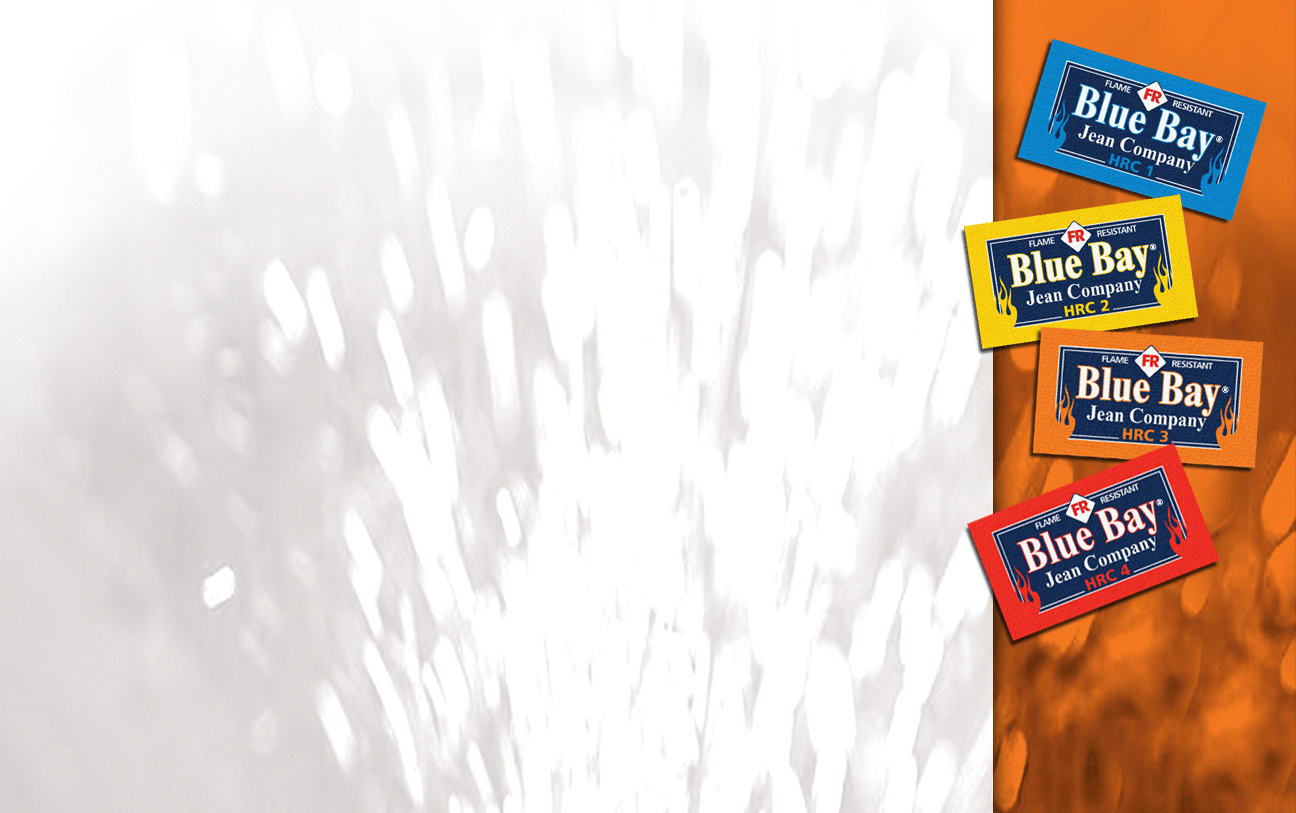
Blue Bay Jean Company® FR garments made of ReliantTM


![]() Reliant™ with EMC technology is an inherently flame resistant fabric blend of Engineered Modacrylic fiber, Cotton, and potentially other fiber combinations. Reliant fabrics provide NFPA 1975, ASTM 1506, and OSHA's CFR 1910.269 compliant state-of-the-art protection in uniforms and
Reliant™ with EMC technology is an inherently flame resistant fabric blend of Engineered Modacrylic fiber, Cotton, and potentially other fiber combinations. Reliant fabrics provide NFPA 1975, ASTM 1506, and OSHA's CFR 1910.269 compliant state-of-the-art protection in uniforms and
occupational work wear with all the comfort of cotton. This advisory is intended to offer laundering recommendations to help maintain Reliant garments flame and arc resistance, comfort, and crisp professional appearance for as long as possible. First and foremost, it's important to recognize the 3 distinct methods in which Reliant garments can be laundered:
HOME LAUNDERING![]()
![]() Care must be taken in adhering to washing temperatures as stated in garment labels and or hangtags. Cooler washing and drying temperatures are highly recommended for improved garment fit and wear life. Following these home laundering recommendations will help
Care must be taken in adhering to washing temperatures as stated in garment labels and or hangtags. Cooler washing and drying temperatures are highly recommended for improved garment fit and wear life. Following these home laundering recommendations will help
preserve your Reliant garments professional appearance:
- Reliant garments should always be washed separately from general family laundry.

- Turning garments inside out can result in longer lasting, brighter colors.
- For optimum performance, wash at 110-120F maximum!
- Use a brand name laundry detergent.
- Avoid using fabric softeners and starches because residues of either can burn!
- Do not use Chlorine Bleach!!! Use a non-chlorinated bleach if necessary!
- Tumble dry using the lowest possible dryer heat setting, typically permanent press. Remove items promptly to avoid wrinkles setting.
- Touch up with your iron if necessary. The setting should be a very low heat such as Permanent Press.
- Do not spray flame resistant garments with insect repellents, especially those containing DEET.
DRY CLEANING![]()
![]() Garments can be professionally dry cleaned, after examination by a dry cleaning professional. Care must be taken in the temperatures used to process garments.
Garments can be professionally dry cleaned, after examination by a dry cleaning professional. Care must be taken in the temperatures used to process garments.
COMMERCIAL LAUNDERING![]()
![]() This type of care tends to be the harshest, especially to shirts. Elevated washing, drying and pressing temperatures are used along with starches to achieve a clean, crisp appearance in the shortest amount of time. Fading, fabric sheen, edge abrasion, collar stays, and interlining impressions showing through the fabric become apparent earlier and reduce garment life cycle.
This type of care tends to be the harshest, especially to shirts. Elevated washing, drying and pressing temperatures are used along with starches to achieve a clean, crisp appearance in the shortest amount of time. Fading, fabric sheen, edge abrasion, collar stays, and interlining impressions showing through the fabric become apparent earlier and reduce garment life cycle.